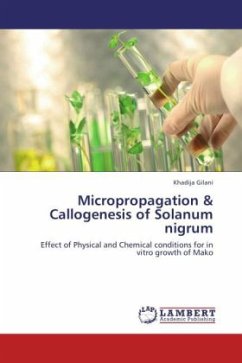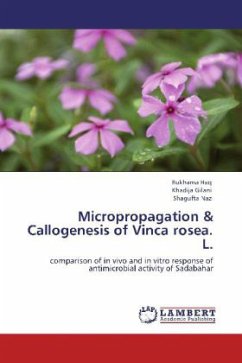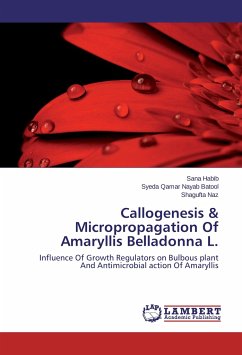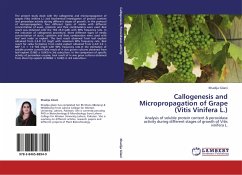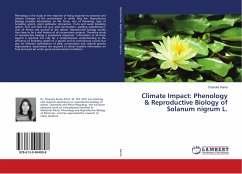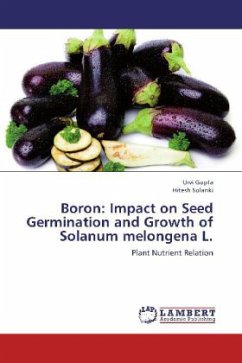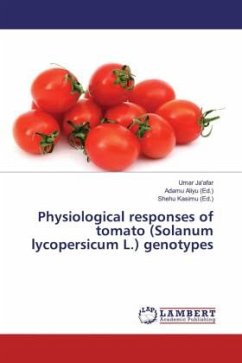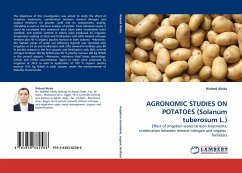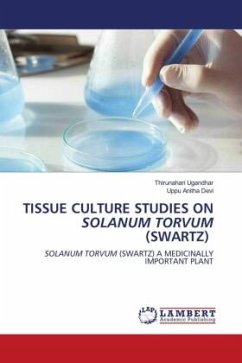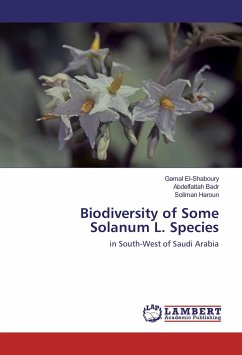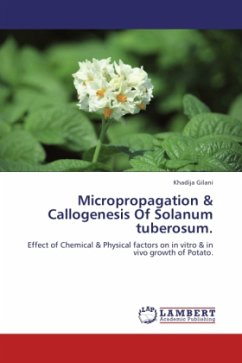
Micropropagation & Callogenesis Of Solanum tuberosum.
Effect of Chemical & Physical factors on in vitro & in vivo growth of Potato.
Versandkostenfrei!
Versandfertig in 6-10 Tagen
32,99 €
inkl. MwSt.

PAYBACK Punkte
16 °P sammeln!
The given plant, Solanum tuberosum was grown in the field as well as in petri plants by seeds.The different explants such as leaf, node, internodes, bud and roots were taken for micropropagation. These explants were grown in vitro after thorough sterilization using different PGR in different media composition.The PGR used were 2,4-D, BAP and NAA. Their combination were also used i.e. 2,4-D+BAP, BAP+NAA and 2,4-D+NAA in different concentration.The most effective and suitable media composition was MS (Murashige & Skoog, 1962) basal medium with BAP (2.0 mg/l) for regeneration from nodal explant o...
The given plant, Solanum tuberosum was grown in the field as well as in petri plants by seeds.The different explants such as leaf, node, internodes, bud and roots were taken for micropropagation. These explants were grown in vitro after thorough sterilization using different PGR in different media composition.The PGR used were 2,4-D, BAP and NAA. Their combination were also used i.e. 2,4-D+BAP, BAP+NAA and 2,4-D+NAA in different concentration.The most effective and suitable media composition was MS (Murashige & Skoog, 1962) basal medium with BAP (2.0 mg/l) for regeneration from nodal explant of Solanum tuberosum.The optimum temperature was found to be 23± 02 oC. The micropropagation occurred more precisely at about 30 (g/l) sucrose concentrations. The most effective photoperiod for the regeneration of Solanum tuberosum was 16 hours light period. The pH 5.7 was considered to be the best for the micropropagation of Solanum tuberosum.



